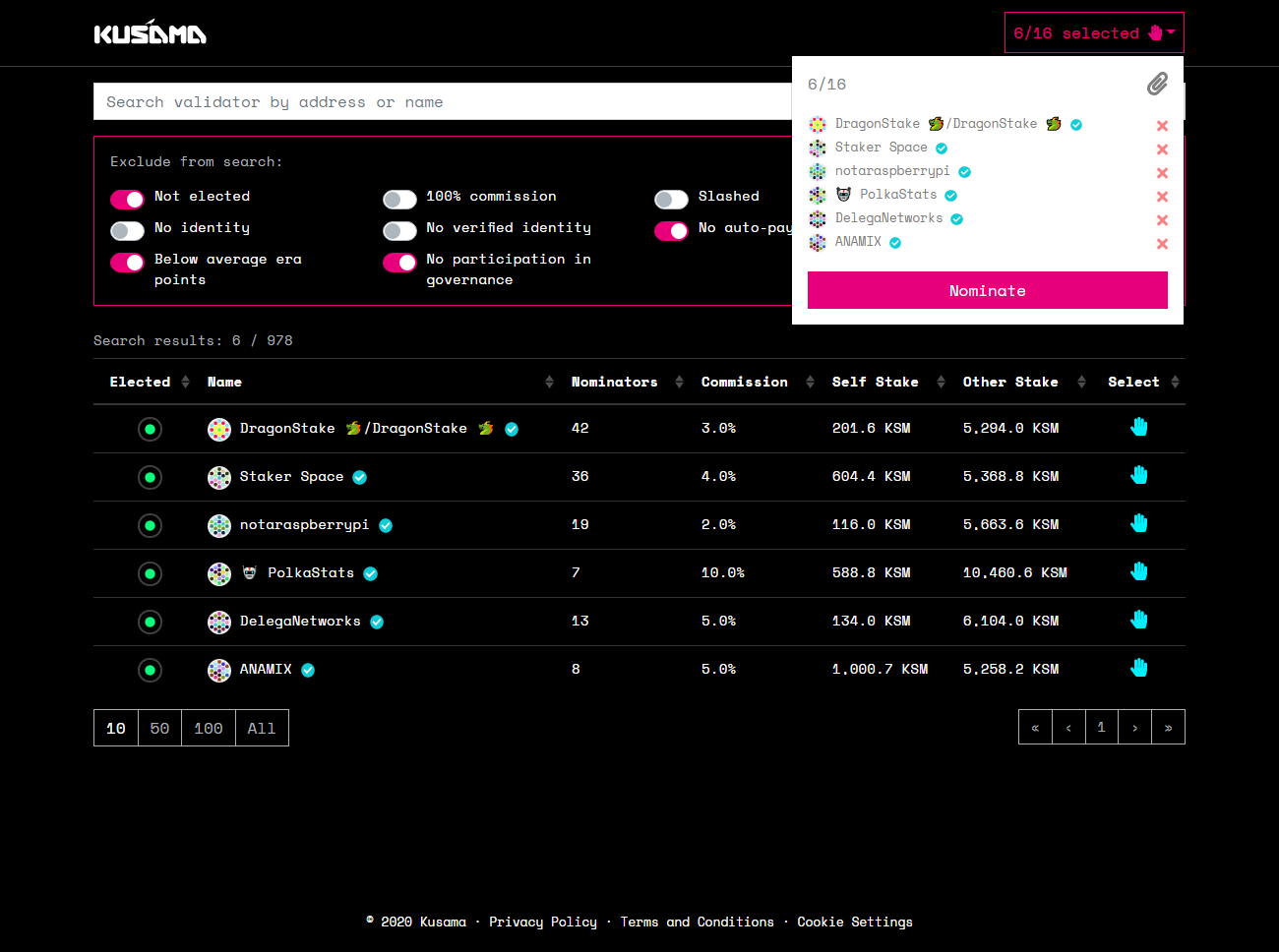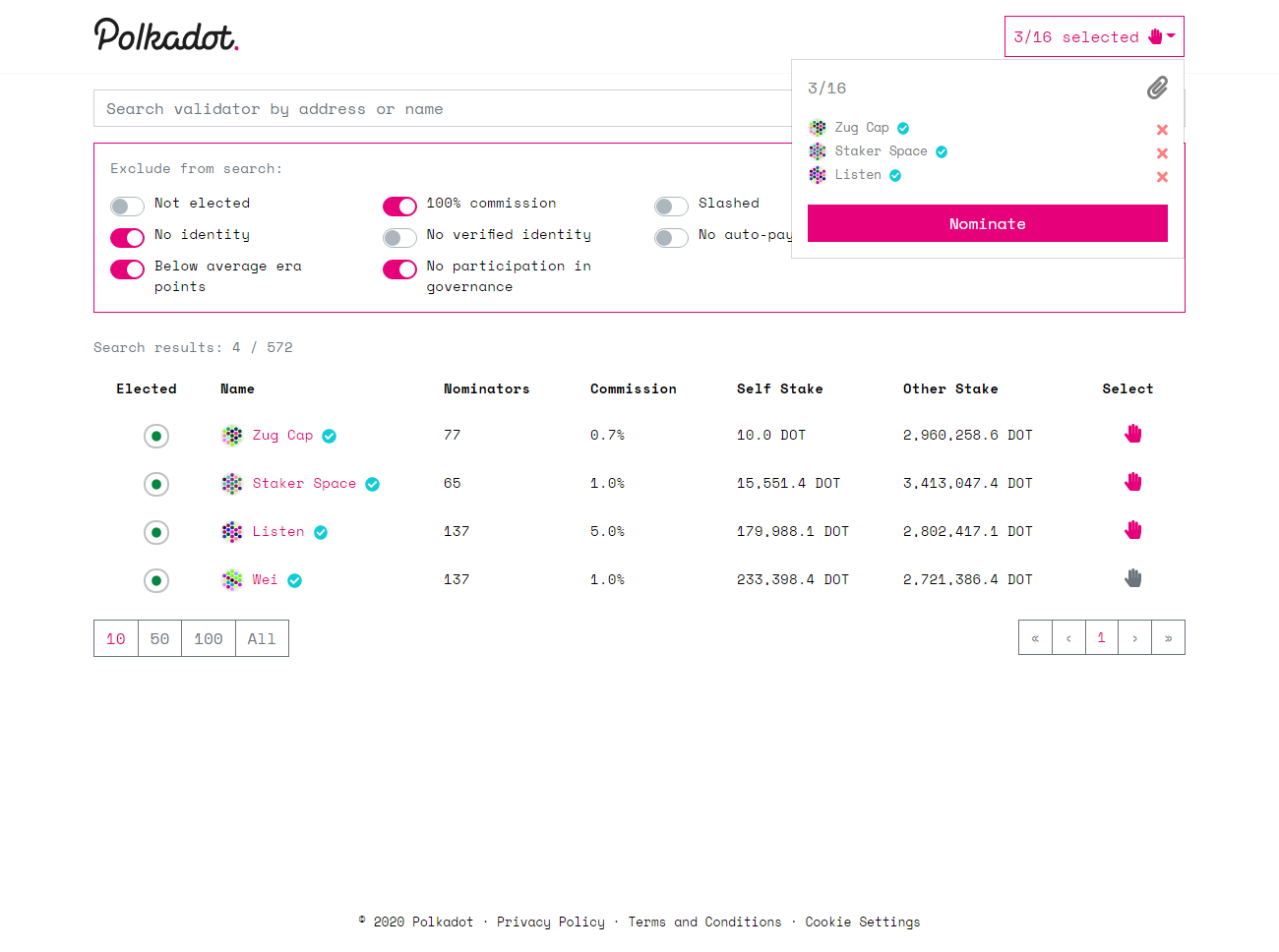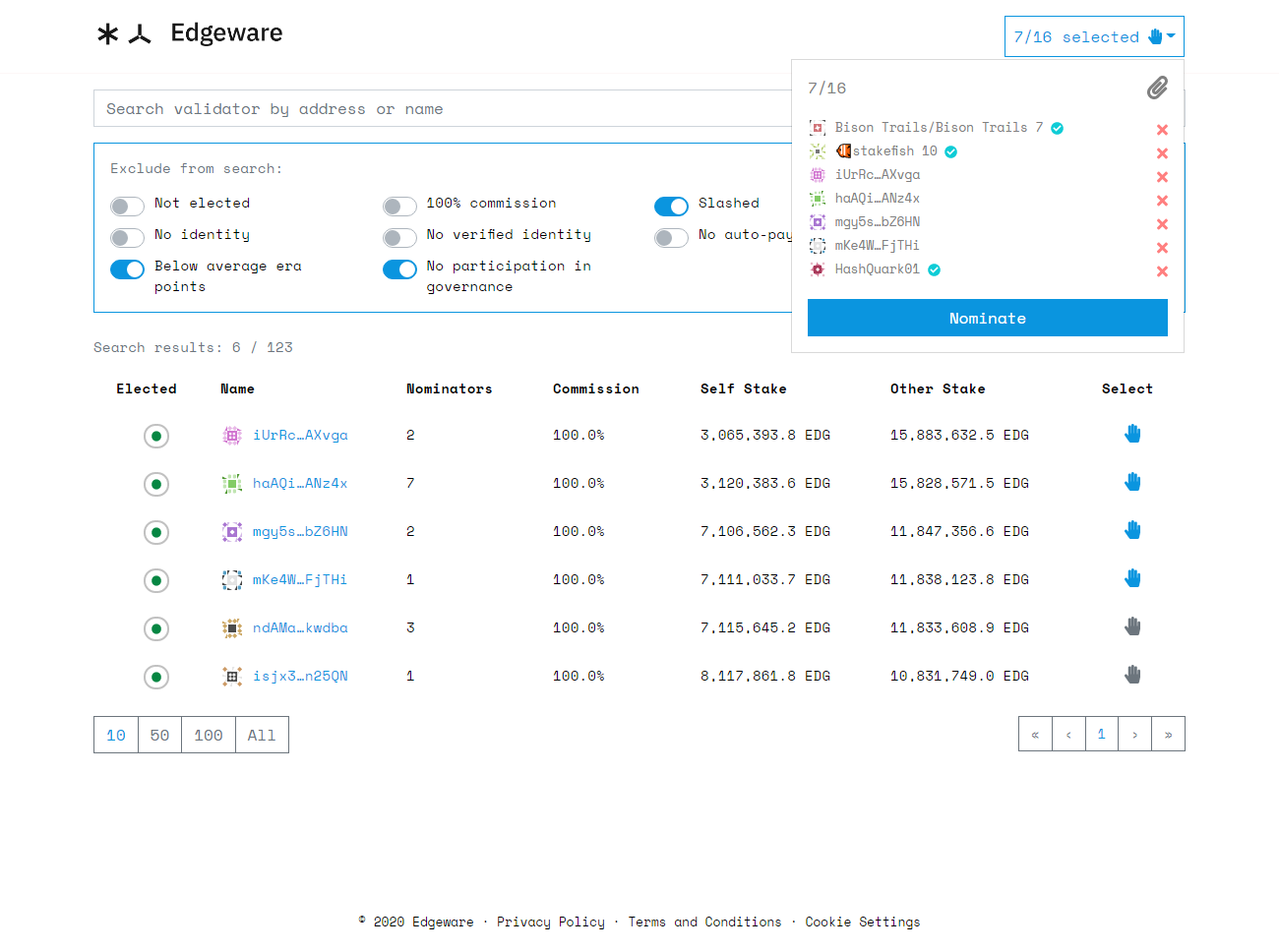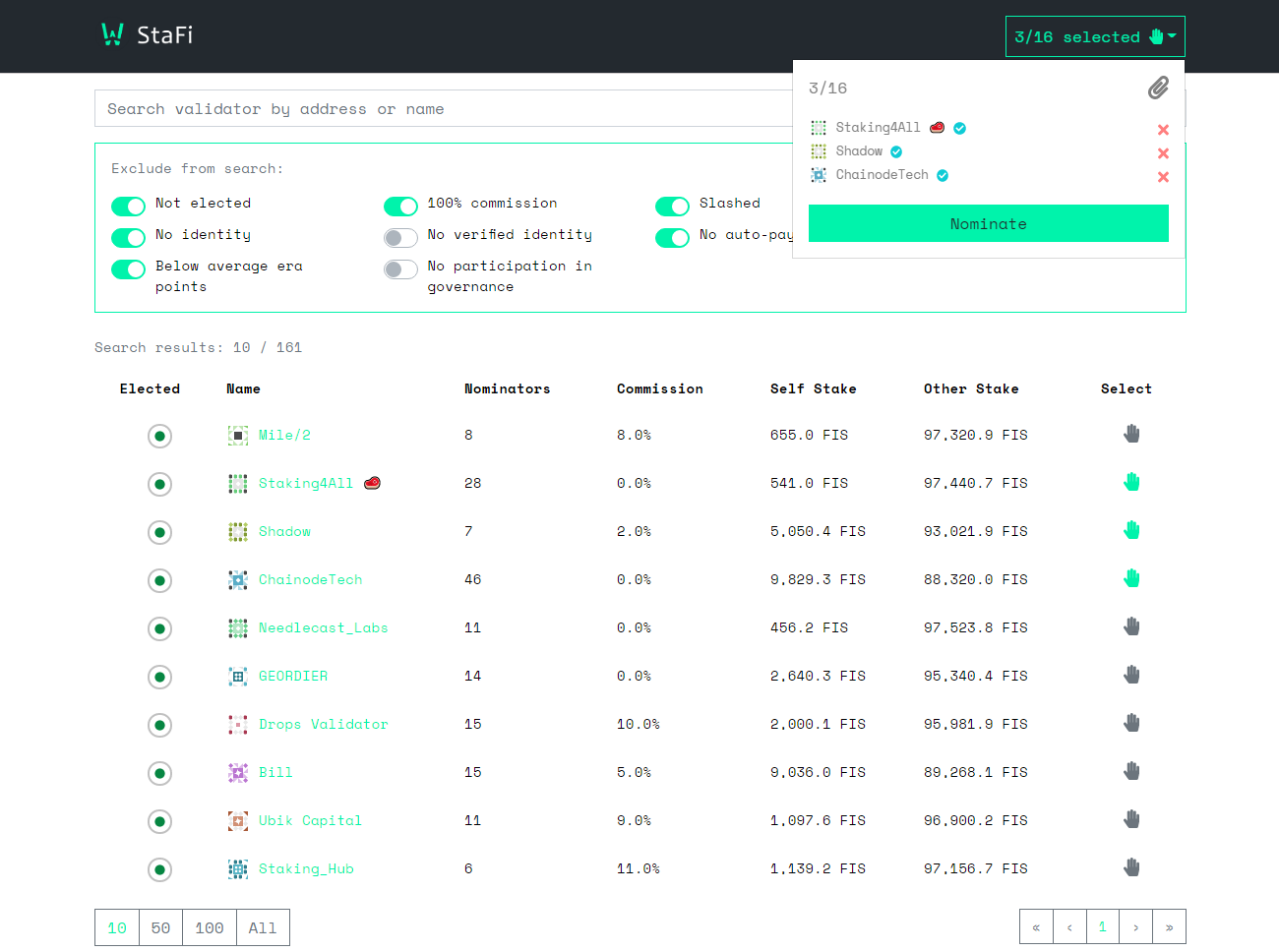Resource center website focusing on validators information on Kusama Network. The website aims to provide quantitative and qualitative data about validators’ performance and help nominators to choose the best nomination set that works for them.
This project is funded by Kusama Treasury, thanks!
Check it out:
https://colm3na.github.io/kusama-validator-resource-center/
# install dependencies
$ yarn
# serve with hot reload at localhost:3000
$ yarn dev
# build for production and launch server
$ yarn build
$ yarn start
# generate static project
$ yarn generate
# deploy to GitHub Pages
$ yarn generate
$ yarn deployThe ranking is based on this on-chain metrics:
Evaluate the quality of the identity data provided by the validator:
How it's rated?
- Bad: Doesn't have an identity set
- Neutral: Have an identity set but it's not verified
- Good: Have an verified identity set
- Very good: Have an verified identity set and provides possible information (legal, email, web, riot and twitter)
The older the address is, the more trustable it might be. The best value (older address) between the validator stash address and its parent identity address will be used for rating this metric.
How it's rated?
- Bad:
addressCreationBlock >= (blockHeight / 4) * 3 - Neutral:
addressCreationBlock > (blockHeight / 4) * 2 && addressCreationBlock <= (blockHeight / 4) * 3 - Good:
addressCreationBlock > blockHeight / 4 && addressCreationBlock <= (blockHeight / 4) * 2 - Very good:
addressCreationBlock <= blockHeight / 4
Evaluate if the validator have a unapplied slash.
How it's rated?
- Bad: validator have an unapplied slash
- Good: validator doesn't have an unapplied slash
Evaluate if the validator uses subaccounts, this can be considered a more orderly way to set up a validator and good practice.
How it's rated?
- Bad: validator doesn't use sub-identity
- Good: validator uses sub-identity
Evaluate nominators and if the validator is oversubscribed.
How it's rated?
- Bad: validator has no nominators or is oversubscribed
- Good: validator have 1 or more nominators and it's not oversubscribed
Evaluate if the era points earned by the validator in the history (1 week by default) are below or above average.
How it's rated?
- Bad: validator is earning era points below average
- Good: validator is earning era points above average
Evaluate validator commission over time (1 week).
How it's rated?
- Bad:
100% or 0% - Neutral:
> 10% and < 100% - Good:
<= 10% and >5% - Very good:
<=5% or ((<=10% and >5%) and decrease over time)
Evaluate frequency of rewards distribution.
How it's rated?
- Bad: No reward distribution detected in history
- Neutral: Reward distribution detected between the last 3-7 days
- Good: Reward distribution detected in the last 3 days
- Very good: Reward distribution detected in the 24 hours
Evaluate if the validator stash address or its super identity address is backing a council member and if is participating in a current proposal or referendum (as proposer or voter)
How it's rated?
- Bad: no participating in governance
- Good: validator is backing a council member or is participating in a current proposal or referendum (as proposer or voter)
- Very good: validator is backing a council member and is participating in a current proposal or referendum (as proposer or voter)
This dapp can be used to provide a validator ranking for every substrate based network that uses this pallets:
- Staking
- Identity
- Democracy
- Council
Currently supports:
- Kusama
- Polkadot
- Edgeware
- Stafi
- Centrifuge
- Darwinia
- Darwinia Crab
Just rename config.js.network to config.js.
- Clone this repo
- Add network logo image file in path
static/img/logo/ - Add favicon image file in path
static/img/favicon/ - Copy and modify one scss theme file in path
assets/scss/themes/ - Edit footer links in
components/Footer.vue - Modify
config.jsparameters to suit the new network - Configure GitHub Pages and execute
yarn generate && yarn deploy - Enjoy!
A PR with the changes would be awesome ;-)



